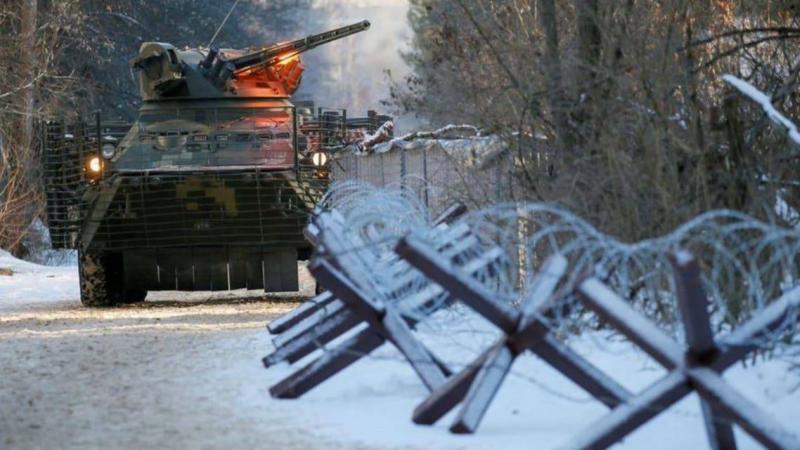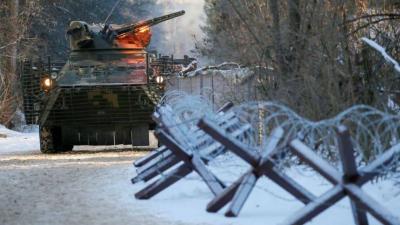Intense clashes erupted between Russian and Ukrainian forces on Thursday for control of Chernobyl, the nuclear site still contaminated due to the worst nuclear accident in history, which was a contributing factor to the collapse of the Soviet Union. Ukrainian President Volodymyr Zelensky tweeted before Russian troops seized the closed power plant, the site of the devastating explosion in 1986, stating, "Our defenders are sacrificing their lives so that the tragedy of 1986 does not happen again." But why would anyone want a decommissioned nuclear plant surrounded by miles of contaminated and poisoned land? The answer lies in geography, as Chernobyl is located on the shortest route from Belarus to the Ukrainian capital, Kyiv, and thus it forms part of a line of attack for Russian forces invading Ukraine.
If Chernobyl is seized, Western military analysts say Russia will use the fastest invasion route from Belarus, Moscow's ally, to Kyiv. James Acton from the Carnegie Endowment for International Peace, a research institute, remarked, "It was the fastest way from A to B." Jack Keane, a former chief of staff of the U.S. Army, noted that while Chernobyl "has no military significance," it is on the shortest route from Belarus to Kyiv, and Russia's strategic goal is to "cut off the head" to overthrow the Ukrainian government. Keane described the route as one of four "axes" used by Russian forces to invade Ukraine, including a secondary line from Belarus. Collectively, the attacks constitute the largest assault on a European state since World War II.
The capture of Chernobyl was part of Russia's plan, and a senior Ukrainian official reported that Russian forces took control of it on Thursday, although a senior U.S. defense official stated that the U.S. could not confirm this. The fourth reactor at Chernobyl, located 67 miles (108 kilometers) north of Kyiv, exploded in April 1986 during a failed safety test, releasing clouds of radiation that spread across much of Europe and even reached the eastern United States. The explosion primarily affected Ukraine and neighboring Belarus, as well as parts of Russia and Europe. Estimates of direct and indirect fatalities resulting from the disaster range from thousands to up to an additional 93,000 cancer-related deaths worldwide. Initially, Soviet authorities sought to cover up the disaster and did not immediately acknowledge the explosion, tarnishing the image of reformist Soviet leader Mikhail Gorbachev and his policies aimed at greater openness in Soviet society. The disaster is widely viewed as having contributed to the collapse of the Soviet Union just a few years later.




